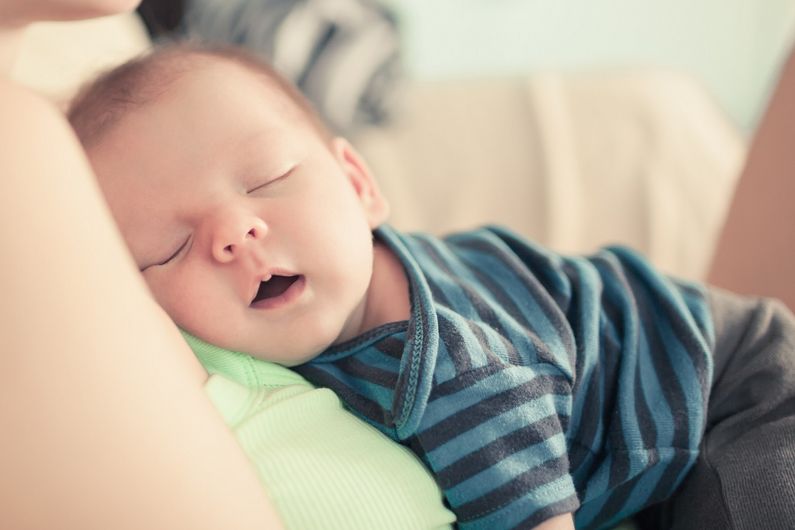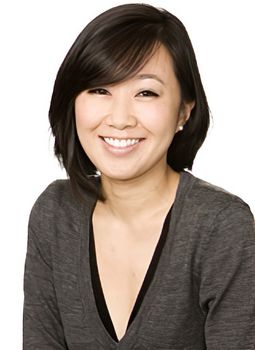Kids' sleep apnea is under-diagnosed
- UdeMNouvelles
03/31/2023
- Béatrice St-Cyr-Leroux
One of the most common respiratory problems in children, obstructive sleep apnea can seriously affect development if left untreated. UdeM researcher Nelly Huynh focuses on prevention and screening.
We often hear about sleep apnea in adults, but in children? Actually, pediatric obstructive sleep apnea is far from rare: 1 to 5 per cent of children are estimated to suffer from it, making it one of the most common respiratory problems in children.
Sleep apnea is when breathing repeatedly stops and restarts during sleep due to a partial or complete blockage of the upper airway. While this can happen in both adults and children, the causes are different.
In children, sleep apnea is often caused by a narrowing of the upper airway due to enlarged tonsils or adenoids, glands located high up in the throat on the back wall of the nasal cavity, behind the uvula. Other causes include obesity (also a factor in adults), craniofacial malformations and neuromuscular diseases.
Nelly Huynh, a professor in Université de Montréal’s Faculty of Dentistry and researcher at the CHU Sainte-Justine Research Centre, has made sleep apnea in children a focus of her research. She studies the links between respiratory disorders, craniofacial malformations and sleep from the perspective of dental medicine. Since the consequences of this under-diagnosed disorder can be serious, she is particularly interested in prevention, screening and treatment.
Sleep apnea may not cause tiredness in children
“Contrary to what we see in adults, children who suffer from sleep apnea don’t necessarily complain of daytime sleepiness,” said Huynh. “So parents often don’t realize there’s a problem.”
Instead, the child may be irritable or impatient, have learning difficulties or exhibit delayed growth, behavioural problems or attention deficits. Some studies even suggest that the sleep disturbances associated with ADHD may be linked to sleep apnea.
“Sleep is necessary for regulating mood, not to mention cognitive, motor, immune, endocrine and cardiovascular function,” explained Huynh. “Growth hormone production also peaks at night. When these functions are disturbed by a lack of oxygen or fragmented sleep during an intense growth and development phase, the consequences can potentially be very serious.”
Fortunately, treatments for sleep apnea in children are generally effective and can address the underlying cause. For example, enlarged tonsils are removed surgically. In the case of craniofacial malformations, an orthodontic device to widen the upper jaw (palate expansion) or move the lower jaw forward (mandibular advancement) can be used to help clear the airway. As a last resort, a positive airway pressure machine may be considered.
Intervening (long) before it starts
For Huynh, early intervention is the key to preventing sleep apnea in children and the significant developmental deficits associated with it. How early? The womb, says Huynh. She is leading a research project on pregnant women who suffer from sleep apnea in order to determine how the disorder affects not only pregnancy, but also the health of the child in utero and after birth.
“We have found that when the mother has sleep apnea during pregnancy, her child is more likely to have it too,” said Huynh. “We don’t yet know whether this susceptibility is due to the child inheriting the mother’s anatomical features, or to a genetic predisposition or environmental factors.”
By studying pregnant women, Huynh hopes to determine whether treating sleep apnea in the mother will improve not only her health but also that of her unborn child, as well as prevent sleep apnea from appearing in her child after birth.
In the meantime, early testing and treatment is still the best way to minimize the harmful effects of sleep apnea in children. But as Huynh points out, families often find it difficult to get a diagnosis. This requires a sleep study, or polysomnography, to measure and record an array of physiological variables during sleep in the controlled setting of a sleep laboratory. The test is usually performed only in hospitals (rarely in private clinics) and wait times are long.













